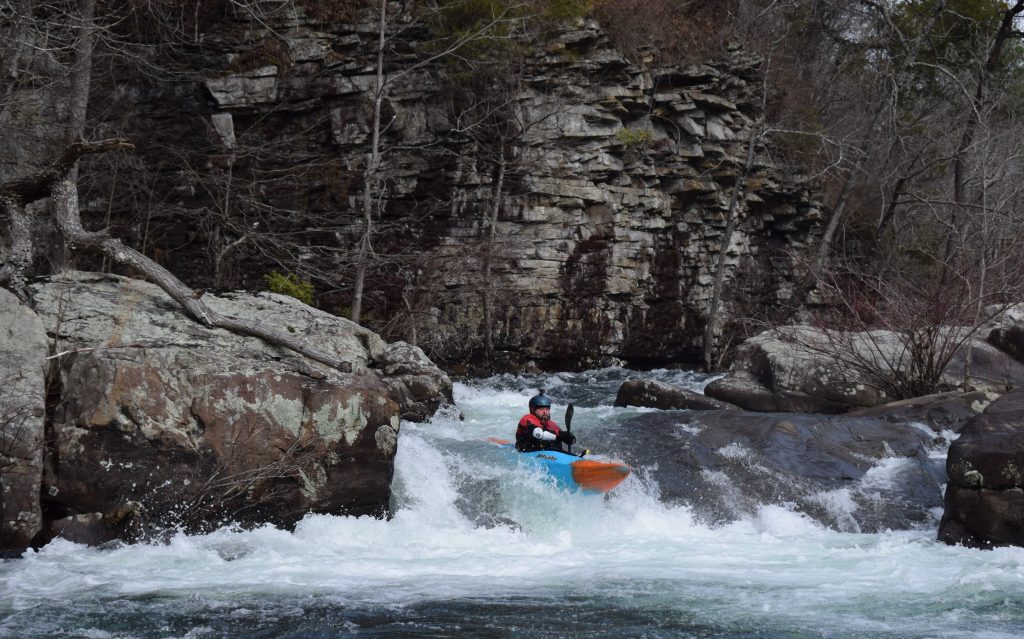With Photos by Ouzal Hinz
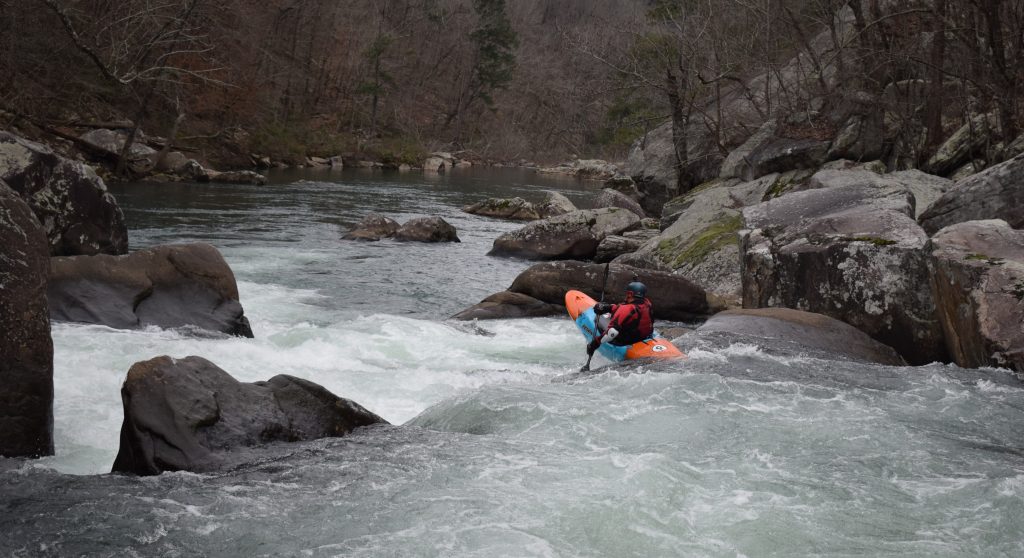
I was pretty excited when I heard Pyranha was going to make a second generation of the 9R series. The original 9R Large fit me well and complimented my Machno nicely for times when I wanted more speed. I also always have some amount of anxiety surrounding an update of an existing boat that I like. I worry the new design might not suit me as well and being at the top of (or sometimes over) the weight range on most boats, sizing is always one of my biggest (pun intended) concerns (#bigguyproblems). I always wonder if the new design will be big enough for all-day comfort and will it float me high enough in the water for me to take advantage of all the intended benefits of the design.
When the stats of the 9R II Large were finally released, my fears were eased and my excitement spiked. Despite being the same volume (90 gallons) as the first generation, the new large is around ¾ of an inch narrower and 6 inches longer! Just reading the stats got me excited. One drawback of the original 9R Large was that because of the design choice to keep the overall length to under nine feet (to keep it in the short-boat class when racing), it simply wasn’t as fast or nimble as the Medium version. I was really pleased to hear that this time around the design would not be restricted to the arbitrary nine-foot mark. The added length would certainly help add speed and just as importantly it allowed for a slight narrowing of the overall width, which enhances both speed and agility.
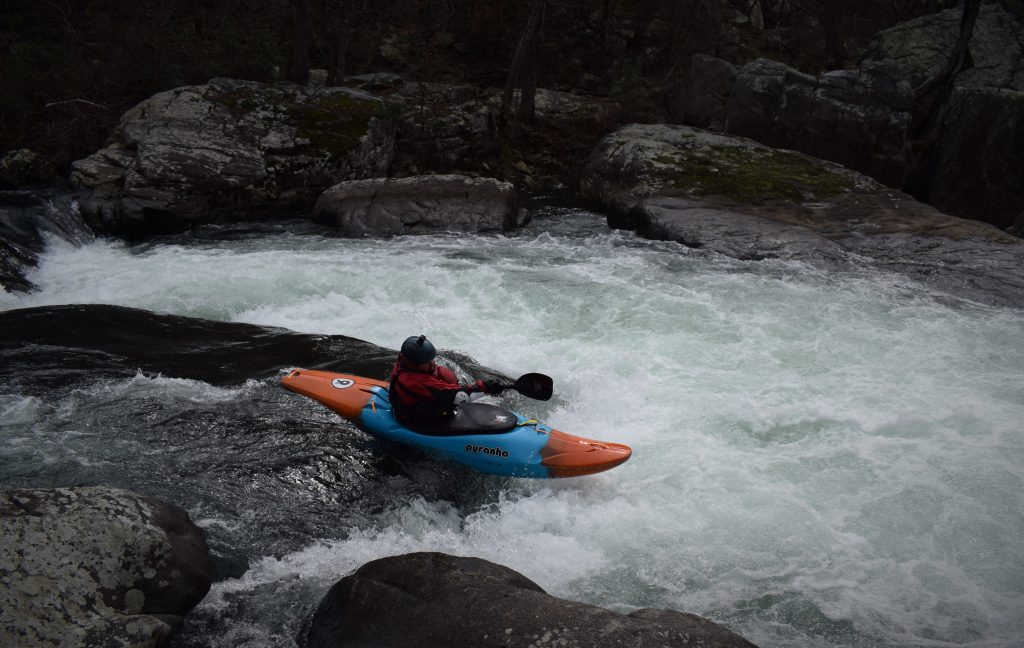
When reading a review of a boat (or any other gear), it is important to have some background on the reviewer to be able to take their assessment in context and see their opinion for what it is. As for me, I started paddling canoes with my dad in the 1980s and moved from canoes to kayaks in 2000. I’ve been paddling 100-150 days a year ever since with perhaps 20% of that time spent playboating and the other 80% spent running creeks and rivers. As a big guy (6’1” tall and 265 lbs), I’ve made it a point to try most of the larger kayaks that have come out over the years. I enjoy trying different boats and comparing the various design features… after all, every choice in design is somewhat of a tradeoff and I find it interesting to experience the differences.
At the time of writing, I’ve had about a dozen days in the 9R II Large. A couple of great days on Johnnies Creek, a steep (300 FPM), low-volume creek consisting of a mix of bedrock slides and boulder rapids. I’ve also gotten ten days on another local favorite, Little River Canyon, at levels ranging from 400-1300 CFS. The character of Little River Canyon varies greatly depending on the water level. At lower levels, it consists of technical, boulder-choked rapids that require precise manoeuvring. At higher levels, the character shifts to that of pushy river running on steep rapids with some serious holes. The variety of levels over the past month have provided a great opportunity to test the 9R II Large in a lot of different situations.
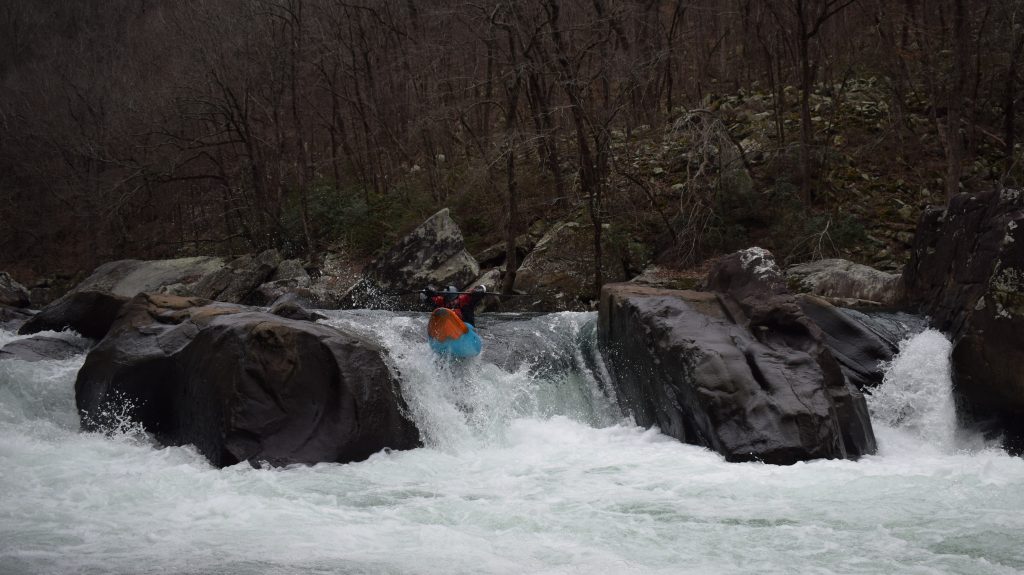
One of the first noticeable things, when looking at and paddling the 9R II, is the dramatic, up-turned bow. The bow rocker continues almost all the way to where the deck of the boat meets the nose. When sitting neutral in the water, the uppermost extent of the bow rocker is at least as high as the front of the cockpit rim, maybe even higher. On the water, this results in a ton of bow lift and a boat that wants to go over everything in its path. When coming off pour-over features and ledges, it changes downward momentum into forward momentum extremely efficiently… sending the paddler satisfyingly skimming across the backwash.
Despite the overall width being narrower than the original 9R Large, the widest part of the 9R II Large stays wider for longer towards the stern of the boat. This strategically placed width and volume really helps keep the boat more level when coming out of holes and landing drops. Instead of a big wheelie, where the bow shoots skyward and lots of momentum is lost, the downward momentum becomes forward momentum without slowing down as much. The updated large also has a little bit more pronounced chine edge in the center of the boat which can be engaged with a slight lean to whip into an eddy or hold a line when charging through turbulent water.
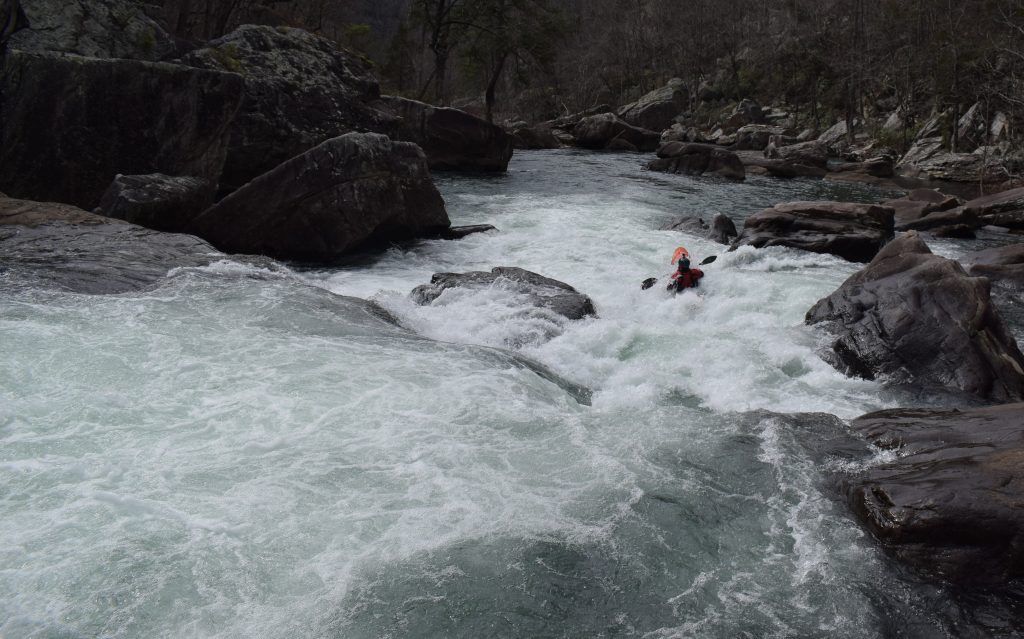
The Large Machno’s greater overall load capacity is something to consider for paddlers over the recommended weight range for the 9R II Large, those planning to carry enough gear that would put them over the recommended range, or just those wanting the biggest, most forgiving boat for heavier paddlers. The Machno’s higher volume and rounder edges do make it even more forgiving, but it is certainly not as high performance. The tradeoff is that being narrower and having a slight edge keeps the 9R II from getting pushed around as easily in higher volume situations and in those scenarios, it seems to hold a line a little better than the Machno.
Below is some video from my first week paddling the 9R II Large. I tried to pick out clips that show the way the hull reacts in a variety of circumstances. Since that first week, I’ve moved the seat forward and am feeling even more dialled-in, a change I’d definitely recommend for anyone at the higher end of the weight range. With my weight slightly more forward, it was easier to control the bow and seemed to really add precision to my boat placement.
The 9R II is an impressive design and combined with the dimensions of 9R II Large, Pyranha has created perhaps the fastest and most nimble boat that has ever been available for bigger paddlers. Faster acceleration, faster outright speed, quicker turning… what’s not to like? Despite all its high-performance characteristics, overall it is also very forgiving, a feature to be appreciated by beginners and experts alike. A few quick strokes bring it up to speed, it boofs over anything, and moves around the river with the handling of a sports car. I love everything about it and look forward to zipping around my favorite runs in it for years to come!
Until Next Time…
Adam Goshorn
